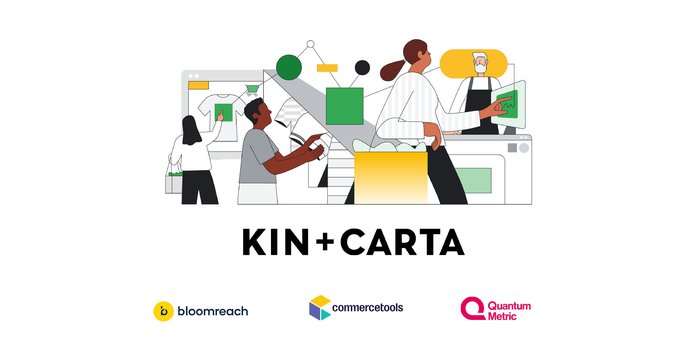Faster retailer success with Google Cloud Shelf Checking AI and Cortex Framework with SAP
Shilpi Srivastava
Principal SAP Specialist CE , Google Cloud
Imagine this scenario: you walk into a store with a specific brand of product in mind, excited to make the purchase, only to be disappointed when you find out it's completely sold out on the shelves. This situation is all too familiar for many of us.
No shopper wants to walk into a store to find empty shelves. While some shoppers may patiently seek assistance from a store employee, most will leave without purchasing, even if the product they want is in stock. The lost sales opportunity can lead to reduced revenue, decreased profitability, and an unsatisfactory customer experience. And today, the problem of empty shelves has only gotten worse, as freelance shoppers and ordering apps have upended traditional shopping patterns. In 2021 alone, the absence of products on shelves cost American retailers $82 billion in missed sales.
For as long as stores have been around, store operators have attempted to keep their shelves stocked. Manually checking thousands of items in a large store is expensive and a lot of work for associates. To get ahead, they need some level of automation to scan the shelves, for example, by mounting cameras to take pictures of the shelves to help associates gain insights when shelf products are low.
While this is a promising approach, the challenge becomes analyzing data at scale. With potentially millions of products sold across a company’s retail stores, image capturing solutions require highly scalable training setups and massive amounts of data to train models that can recognize and map images of products.
At Google Cloud, we’ve been using our expertise in Data & AI to help solve this problem at scale. We also use Google Cloud Cortex Framework to help accelerate data access and availability of relevant data sources like product and inventory data from SAP ERP. When combined with insights on shelf management, this creates a unified data layer that enables efficient task management, leading to increased productivity for store associates. Read on to learn more.
Real-time Shelf Checking AI: The solution to empty shelves
At the National Retail Federation (NRF) event earlier this year, we announced new AI tools for retailers, including Shelf Checking AI, which harness the power of automation, AI expertise, and data processing to help address the problem of empty shelves.
This solution utilizes pre-trained machine learning models to associate images with particular products by leveraging the Product Recognizer AI model and identifies pricing tag attributes (e.g. price, product title) through the Tag Recognizer AI model. In addition, it supports various modalities for capturing shelf images, including robotic automation, fixed cameras, shelf edge cameras and mobile devices. Currently in Preview, Shelf Checking AI represents a significant step forward in solving the challenges of keeping shelves adequately stocked, helping retailers to improve their bottom line, customer experience, and brand reputation.
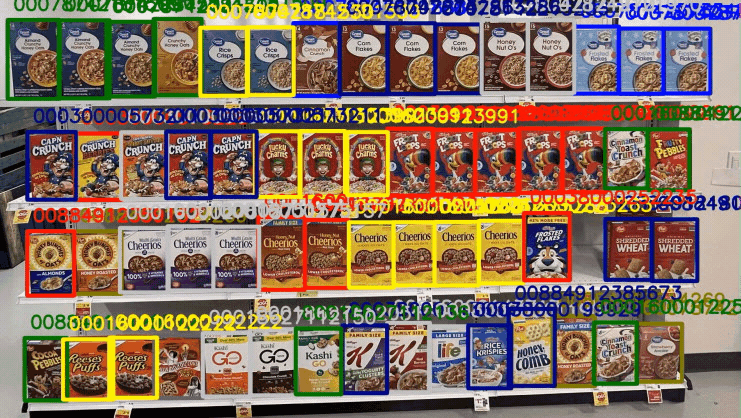

At the heart of Shelf Checking AI is the Product Recognizer AI model, which can identify the products in an image or on a shelf. The model can be applied to images of store shelves taken using cameras or mobile devices. In addition, Shelf Checking AI uses Google's vast collection of product information, including a product’s GTIN/UPC identity, brand, title, cross-language descriptions, logo, imagery featuring different packaging variations, and more. With this product database, the Product Recognizer AI model can quickly identify numerous products.
Google Cloud and SAP: A better together solution
Now that you have real-time visibility into which of your shelves are empty, you can act to address the problem. But is this data alone enough to guide you in making informed decisions? No. You also need supplementary data from your ERP system to make more informed decisions on how to optimize restocking — data such as:
High-margin products: To help prioritize your restocking efforts.
In-store product inventory on hand: To determine whether a product needs to be restocked.
Supplier lead time: To help determine when to reorder products from suppliers to arrive in time to be restocked.
Frequency of orders: To determine how often you need to reorder products.
The data you collect from your shelves and ERP applications like SAP provides powerful contextual insights. By combining these two datasets, you can better understand your operations and make better decisions.
For example, you can use this data to:
Prioritize your restocking tasks: By understanding which products are most in demand and have the highest margins, you can prioritize your restocking efforts and ensure that your shelves are always stocked to maximize profitability.
Optimize your workforce: Automating task management for replenishment and scheduling the frequency of restocking can help retailers make better use of their workforce.
Reduce stock-outs: By knowing your inventory levels and your demand, you can minimize running out of products.
Optimize replenishment: By knowing your lead times and demand, you can process and reduce costs.
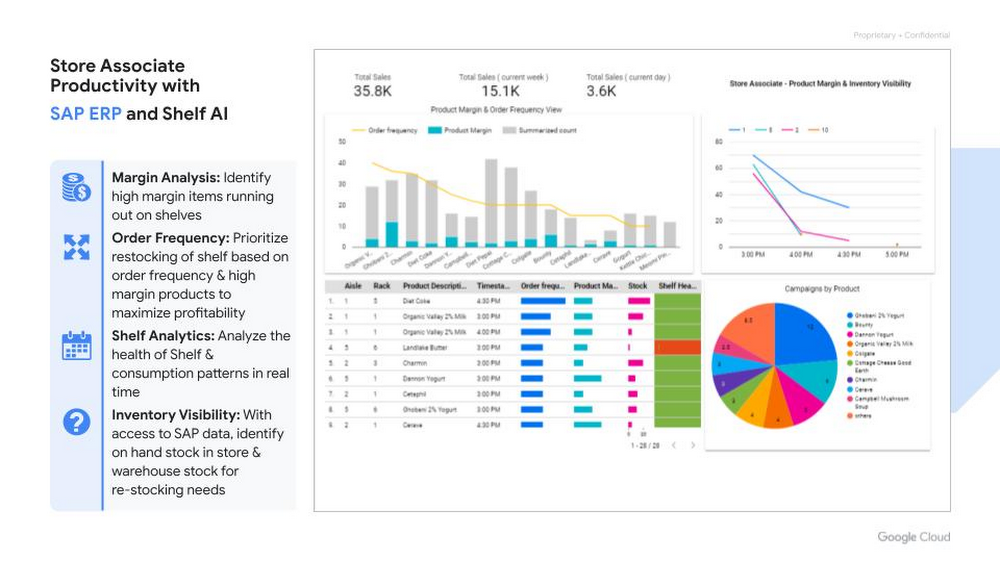

Google Cloud can help retailers answer these questions and more by unifying enterprise data sets, including expediting access to SAP data, for advanced analytics and insights.
However, working with SAP data outside of SAP systems can be a challenge. SAP data has a lot of business semantics and extracting it from its application layer into an external data cloud usually requires manual effort to bring this together.
That’s where Google Cloud Cortex Framework comes in and helps you get value from your SAP data quicker by providing reference architecture patterns for integration, and a set of predefined deployable solution accelerator content for fast data processing and modeling within BigQuery as a foundation for advanced insights and AI processing at scale.
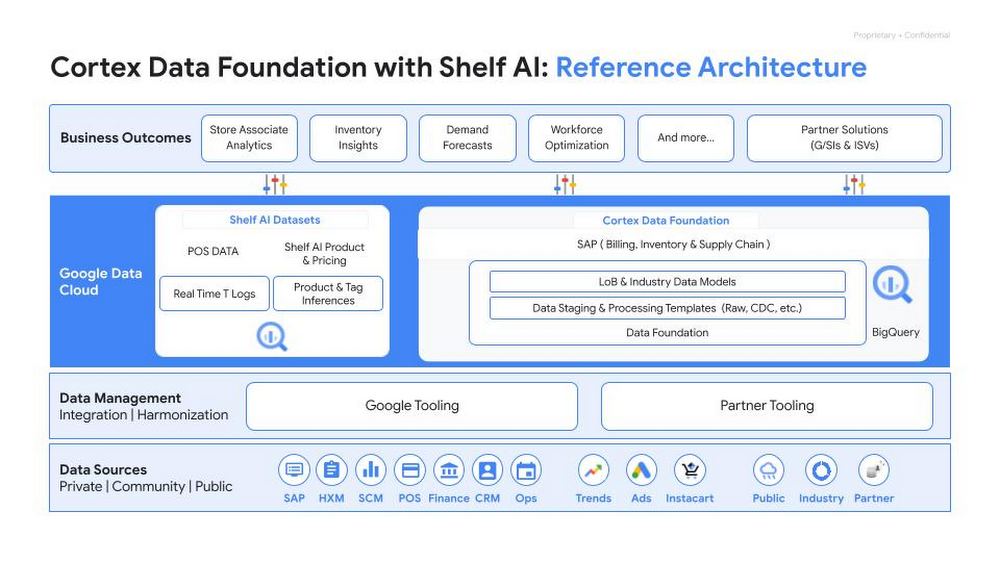

You can deploy Cortex Data Foundation for SAP content rapidly into your Google Cloud BigQuery environment, and get a set of rich SAP context-aware data models and insights into relevant areas like products, order frequency, inventory on hand, supplier lead times and more. Cortex Framework can help to provide the data foundation for decision-making leading to effective business outcomes such as task management, workforce optimization, and replenishment. For example, Cortex Data Foundation for SAP, combined with POS data, and Shelf Checking AI can improve store associates' productivity by assisting the store manager in managing and planning fulfillment tasks. This can result in maximizing profitability and minimizing the occurrence of both shelf-outs and stock-outs.
Elevating the level of insight automation involves incorporating a comprehensive 360-degree view of your shelf, products, product margins, order frequency, and stock information which can then be utilized to generate an optimized task list and sent to the store operator's mobile application.
This solution approach can also provide a foundation to enable several other benefits, including but not limited to:
Near real-time demand sensing through the integration of external signals like trends, weather conditions, Instacart orders, real-time shelf consumption, and local events to forecast the short-term market
Enhanced competitive pricing analytics
Optimized pricing and promotions, and much more.
With Google Cloud Cortex Framework solution accelerators like Demand Sensing, customers can also solve challenges around faster demand with predefined data models and AI templates that help to bring data together and extend the value of existing demand planning capabilities.
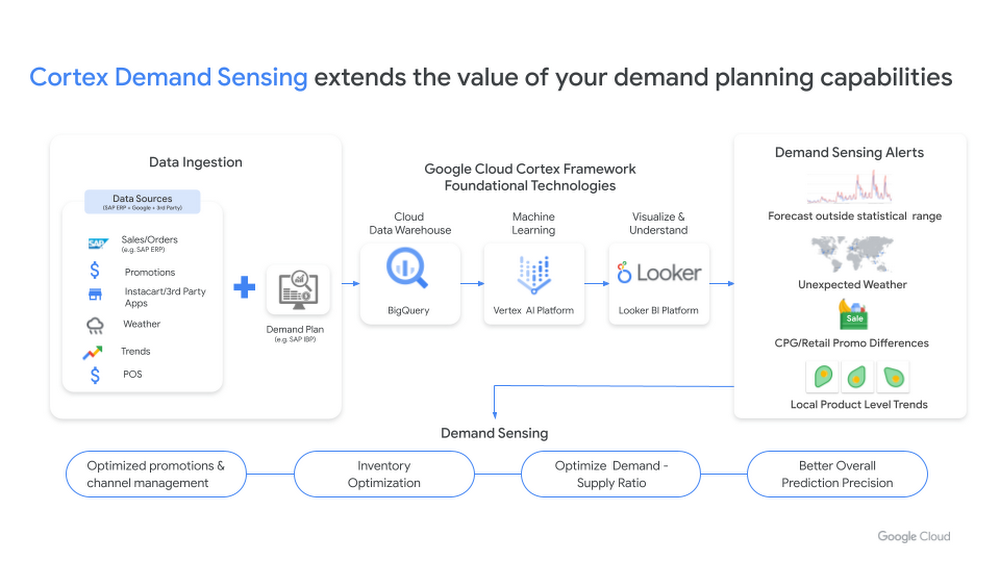

The integration of business data into a comprehensive perspective offers limitless potential and outcomes. By blending a comprehensive outlook of your physical store with transactional data, you can enable competitive pricing analysis, real-time pricing and campaign management, better store, shelf & warehouse visibility for restocking, better store associate productivity and increased supplier involvement. With the data foundation from Cortex and AI enabled insights, the possibilities are endless.
Learn more and start your journey today with Google Cloud’s Shelf Checking AI and Cortex Framework solutions.
